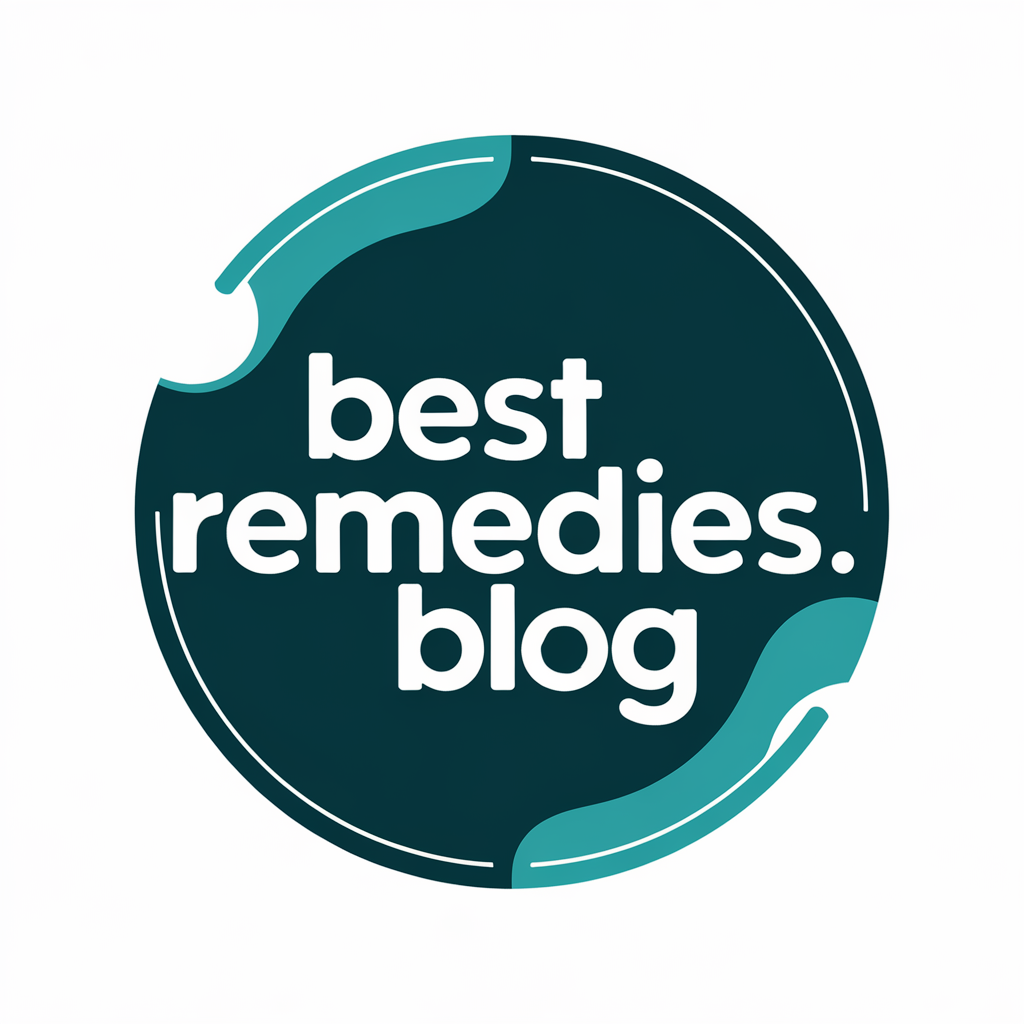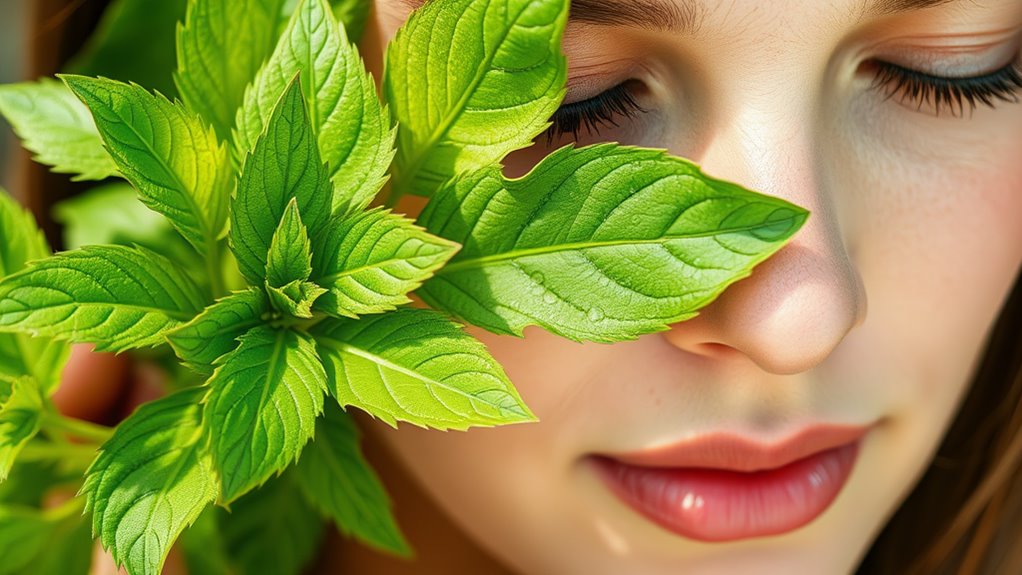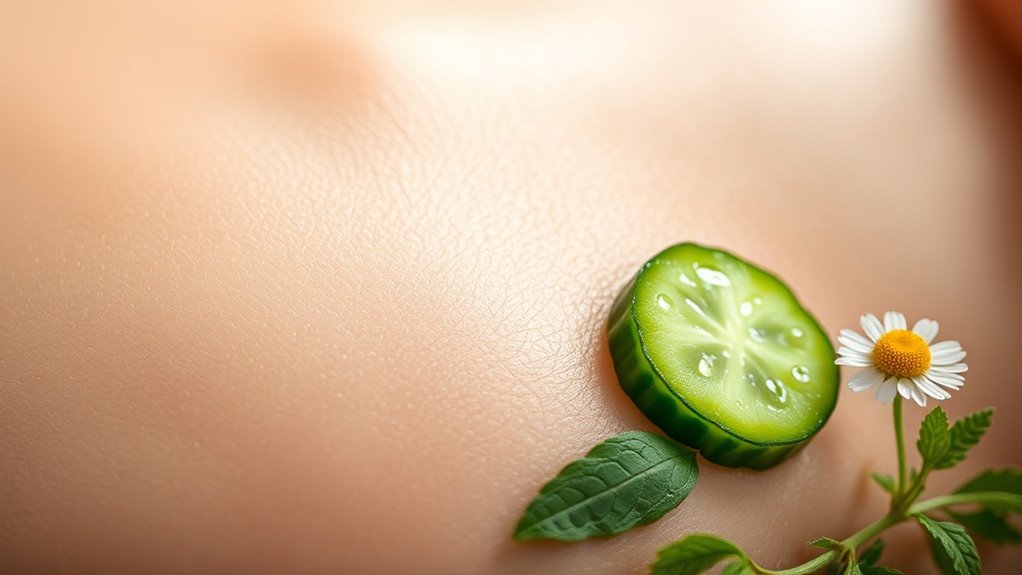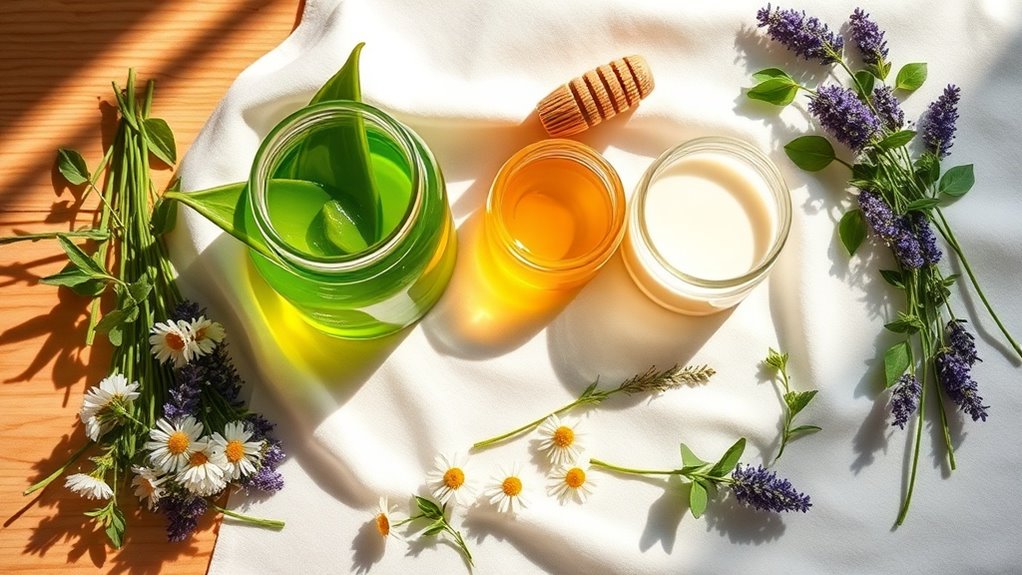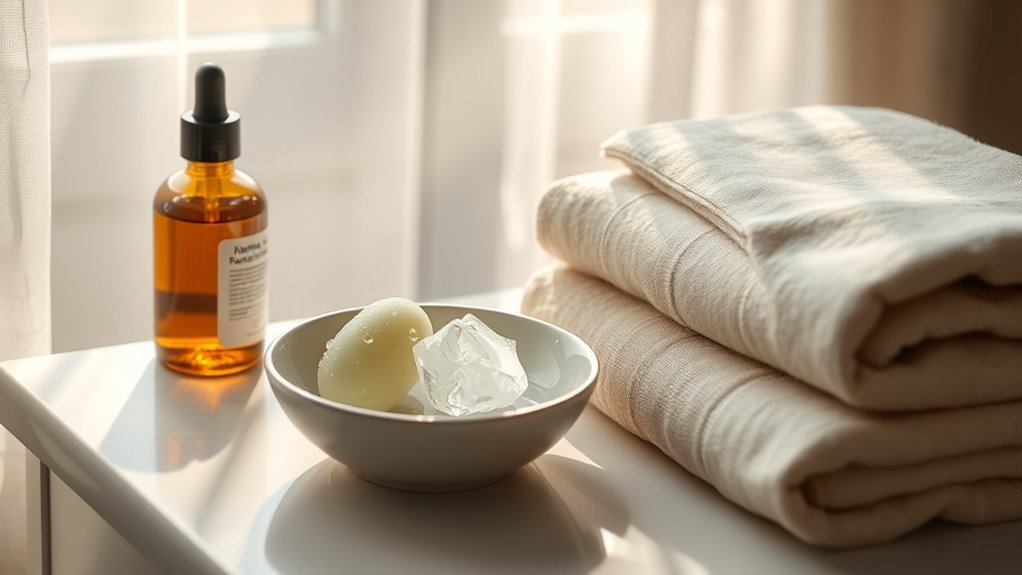Always use clean equipment to preserve purity, ensuring the remedy’s efficacy as per clinical evidence.
These methods are simple, reliable, and evidence-supported for home use.
For enhanced cooling effects, consider pairing this herb with aloe vera to amplify its soothing properties on inflamed skin.
Step-by-Step Application Techniques
Now that you’ve mastered preparing the remedy, it’s time to focus on step-by-step application techniques for optimal results.
You’ll begin by preparing the herb to maximize its anti-inflammatory properties, drawing from evidence in herbal studies.
Next, apply the mixture directly to affected areas using precise methods that studies show reduce face inflammation effectively.
Additionally, incorporating aloe vera can provide extra soothing benefits by calming inflammation and promoting skin healing.
[LIST OF 3 SUBHEADING DISCUSSION POINTS IN ENGLISH
To effectively manage face inflammation with a common herb like aloe vera, consider these three step-by-step techniques: first, prepare the herb by extracting fresh gel; second, apply it gently to affected areas; and third, monitor your skin’s response for optimal results. You’ll apply the gel using clean hands for even coverage, avoiding eyes. Evidence shows aloe vera’s anti-inflammatory properties reduce redness quickly.
| Step | Key Tip |
|---|---|
| 1 | Extract gel from a fresh leaf |
| 2 | Apply a thin layer twice daily |
| 3 | Wait 20-30 minutes before rinsing |
| 4 | Use consistently for a week |
| 5 | Combine with hydration routine |
This approach, backed by dermatological studies, ensures safe, effective relief.
Prepare Herb
Extract fresh gel from an aloe vera leaf to kick off effective preparation for face inflammation relief.
This method, backed by dermatological studies, maximizes aloe’s anti-inflammatory compounds like aloin for optimal results.
- Select a mature leaf: Choose a thick, healthy aloe vera leaf from the plant’s base to ensure high gel yield and potency.
- Clean thoroughly: Rinse the leaf under cool water and gently wipe with a soft cloth to remove dirt and potential contaminants.
- Extract the gel: Slice the leaf lengthwise, then scoop out the clear inner gel, discarding the outer rind and yellow latex to avoid irritation.
This evidence-based approach yields a pure preparation for your skin care.
Apply Mixture
Applying the aloe vera gel to your face involves precise, evidence-backed steps that enhance its anti-inflammatory effects, drawing from dermatological studies on compounds like aloin. You’ll start by cleansing your skin, then apply a thin layer for optimal absorption, as research shows this maximizes aloin’s soothing properties.
| Step | Action | Evidence-Based Tip |
|---|---|---|
| 1 | Cleanse face gently | Reduces irritation, per studies |
| 2 | Apply thin layer | Enhances penetration, as per dermatology reviews |
| 3 | Massage in circular motions | Boosts circulation, supported by clinical trials |
| 4 | Let it sit for 20 minutes | Allows anti-inflammatory action, based on aloin research |
Follow this routine twice daily for proven results, minimizing inflammation effectively.
Noticeable Improvements in My Skin
After incorporating this common herb into your routine, you’ll notice your skin’s inflammation subsiding more quickly, with reduced redness and swelling becoming evident within weeks.
